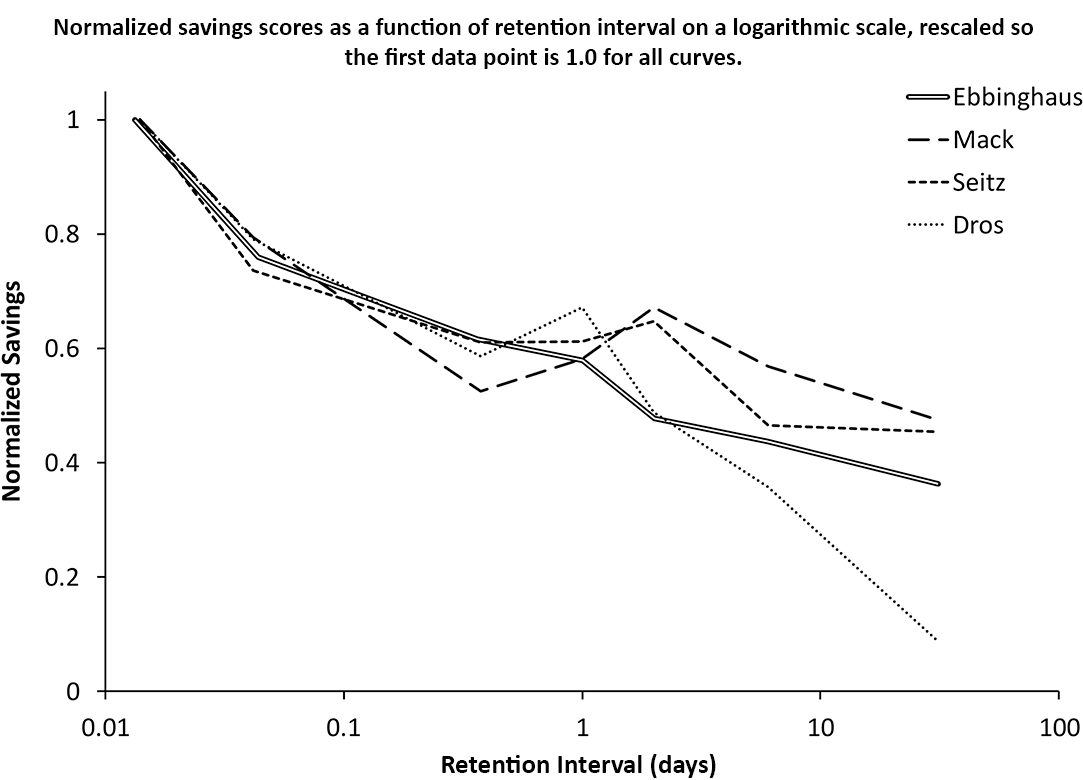If you’ve been in the industry long enough, you’ve probably heard about (drum roll please) the forgetting curve. It’s an often-used, and sometimes over-used concept that refers to the human tendency to rapidly forget what we learn without subsequent relearning or reinforcement.
You’ll hear vendors cite the forgetting curve as the reason you need their product or service. “Learners will forget 90% of what they learn in 30 days without reinforcement!” “70% of what people learn is quickly forgotten!” I’ve seen it quoted as 30% before, too.
There are lots of conflicting claims out there about what the forgetting curve actually is, how quickly people forget, and what trainers can do about it. But despite the confusion, trainers can’t afford to ignore the forgetting curve. When forgetting is properly planned for, it is just another design constraint. But when we pretend forgetting won’t happen or assume forgetting doesn’t matter, it becomes a value killer.
The Ebbinghaus Forgetting Curve
Some of the most commonly misquoted facts about the forgetting curve deal with its origin. Here are the facts:
- Herman Ebbinghaus conducted two separate experiments on himself in 1880 and 1885.
- Ebbinghaus taught himself a list of nonsense syllables, tried to relearn the list after various amounts of time had elapsed and measured how much he had to “relearn”. One of his studies lasted as long as seven months, and he repeated the same procedures virtually every day.
- He found that the more time elapsed between originally relearning a list and his attempt to relearn it, the longer it took to relearn it. This increased until it was almost as if he had never learned the list to begin with.
The results of Ebbinghaus’ studies might seem like common sense to us today, but I found myself with a few questions once I first learned how these studies were conducted.
- If Ebbinghaus was the only subject, how do we know that his curve is accurate? Is his brain an outlier?
- Ebbinghaus was learning and relearning lists of nonsense syllables. What about learning about, say, a new product that is semi-related to a previous product a sales rep sells? How much would they forget in this scenario?
- These studies were conducted in 1880 and 1885. Would they pass muster today? Can they be replicated?
Replication of the Forgetting Curve
As I was preparing for the Reinforcement 101 presentation Leanne Batchelder and I gave at the LTEN Annual Conference and in a subsequent webinar, I found a fascinating study where the authors attempted to replicate Ebbinghaus’ forgetting curve. Jaap M. J. Murre and Joeri Dros published the results of their work in July, 2015.
You can read the full paper if you are interested, but here are the main takeaways:
- Murre and Dros conducted a faithful replication of Ebbinghaus’ forgetting curve experiment, once again using a single subject.
- Their results were similar to the original forgetting curve and other recent replication attempts with some slight variation.

While there are many experiments in the field of cognitive psychology that researchers have not been able to replicate, the forgetting curve has stood the test of time. The research (and our own experience) tells us that we can rely on it as a sound concept.
So what do we do about it?
From Learning Events to Learning Campaigns
Whether it takes place live or online, most training is designed event-based. Learners log on, take training on X, log off, and move on with their lives. In a more expensive example, learners fly in, participate in a training event while multitasking and checking their phones, fly home, and move on with their lives.
What do we really expect them to remember if this is the only planned training activity?
Since the human brain is wired to forget without repeated exposure and practice, trainers have to think beyond an event-based model. This is why the concept of a learning campaign has been gaining in popularity.
Similar to a blended learning curriculum, a learning campaign borrows elements from marketing, communications, and behavioral psychology to make learning experiences more effective at driving behavior change.
At the most basic level, a learning campaign includes:
- Cohesive branding and theme for the training initiative to generate excitement, motivation, and interest.
- A clear value proposition for the learner, who should understand how the training connects to the bigger picture.
- Timely reminders that are designed more like marketing messages than traditional emails from the L&D department.
- Elements of “fun” incorporated throughout, whether that means a competition of some sort or the use of full-fledged learning games that connect to the campaign theme.
- Online learning tools that are available on learners’ device of choice.
- Reinforcement tools, such as Knowledge Guru, that are designed to help fight the forgetting curve and help learners remember things they need to know “cold”.
There are many reasons why it is hard to overcome the forgetting curve, but the first step is awareness. If you are dealing with a skeptical stakeholder who doesn’t want to invest in training that will actually help prevent forgetting, show them the research!



Nice to see Ebbinghaus get the credit he deserves. I’ve seen “the forgetting curve” mentioned many times without his name. He’s also responsible for the learning curve, the spacing effect, the law of diminishing returns, and some great work on primacy/recency. Every learning professional should check him out: http://ow.ly/sWLQ30egWBS